Interviews, Surf cultureThe Mat Professor
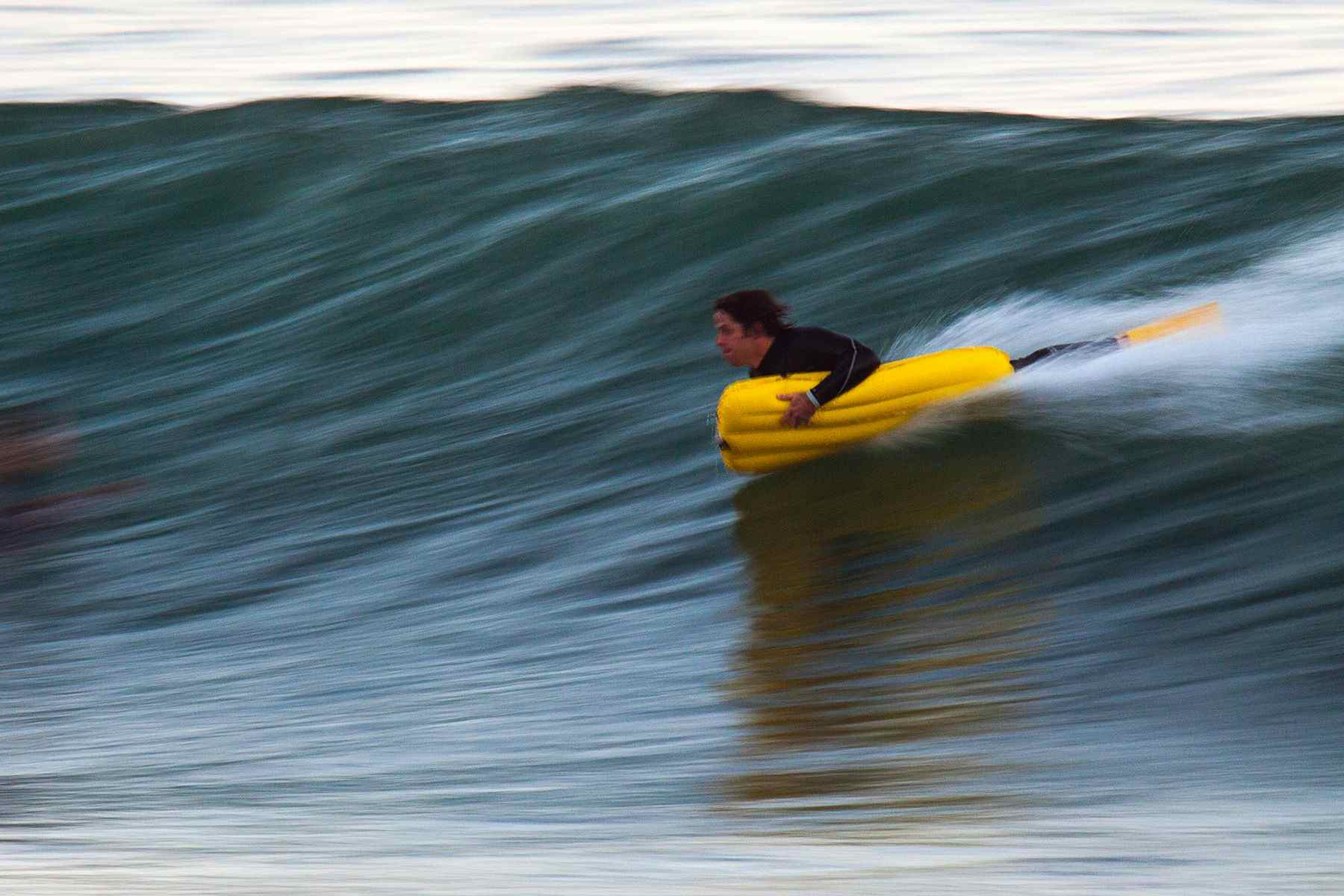
Imagine, if you will, a surfcraft with morphing rails and rocker that allowed you to alter its shape at will to optimize speed, execute a turn, or get deeper in the barrel? Would it surprise you to find out that they already exist, and have done for the past 80 years – pre-dating most surfcraft designs?
You rarely see surf mats in the line-up these days – those inflatable rectangles that are ridden prone by a committed and fiercely underground few. The only mat surfer whose name would be familiar to the foam and fiberglass masses is probably George Greenough, but that alone should tell us something: the man responsible for many of the developments in surfboard design that allow modern surfers to do what they do (a key figure in the shortboard revolution, the designer who redefined the fin, etc…) prefers to ride waves on a vehicle so apparently basic, but that he can manipulate in his search for a particular feeling. Mats put your face close to the wave face, giving a far heightened sense of speed, and carry you quickly across the surface of the water like a hovercraft with a partially deflated mat easily absorbing the lumps and bumps of choppy conditions. Air-bag aficionados claim that a mat provides a far greater connection to the immediate environment in comparison to regular surfboards and more speed and glide than bodysurfing; apparently, a surf mat offers the best of both worlds… By using a partially inflated or deflated mat (glass half full? Or half empty?!), rail profiles can be manipulated by squeezing different parts of the mat, whilst the body position of the surfer and control of the front corners determines the mat’s rocker. Squeezing the outside rail during a bottom turn will, for example, force air into the inside rail making it fuller and increasing hold, whilst squeezing both rails during a re-entry makes the mat more rigid and offers a hard surface for the lip to hit and push back into the wave. A softer mat will go faster, whilst a harder (more pumped up) mat will provide more control (although go too hard and you’ll end up “mat-boarding”), with the beauty of it being that a few puffs of breath out back or a quick opening of the valve is all it takes to alter your mat’s performance characteristics.
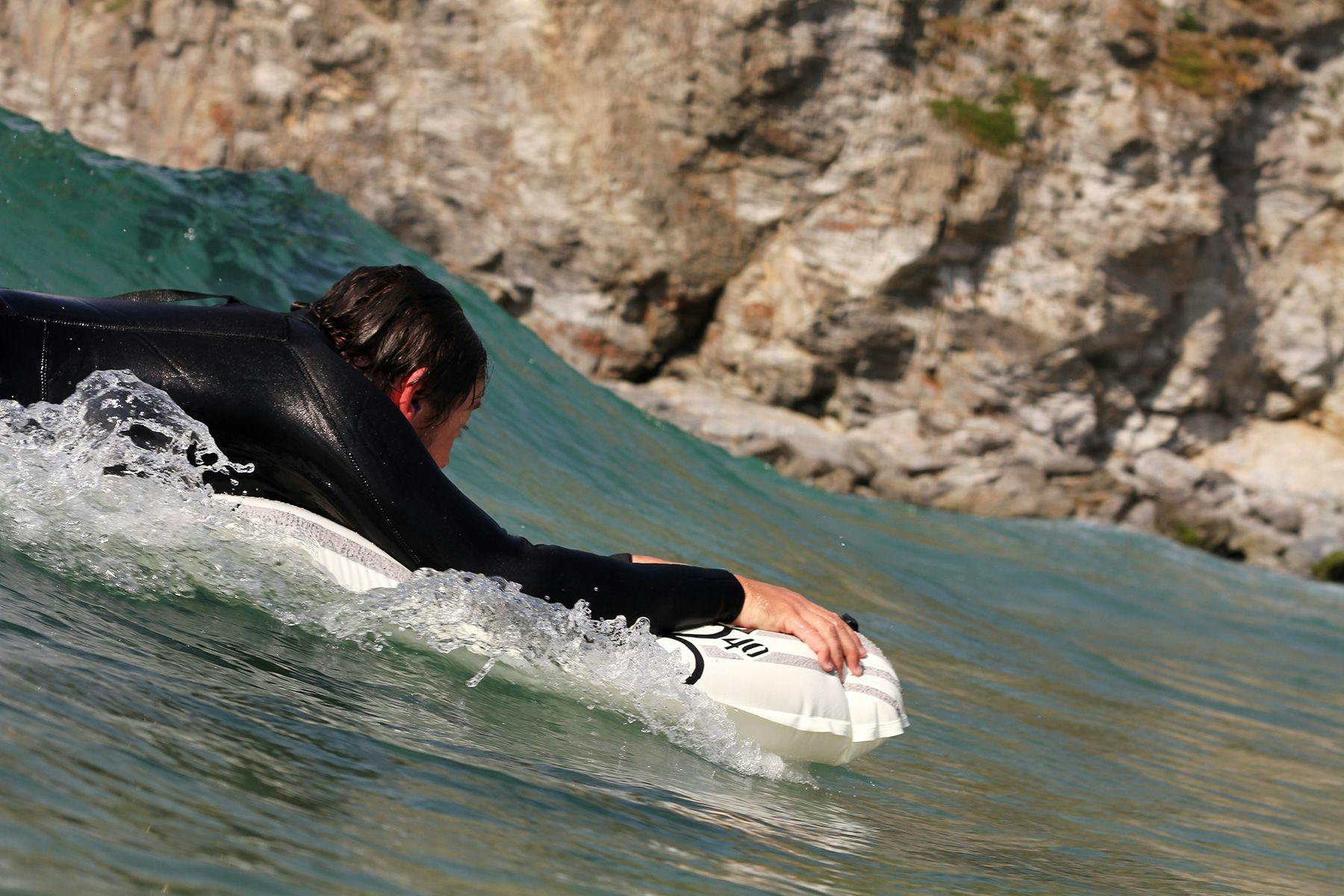
“The funny thing about mats, is that they’re the easiest thing to ride on a beginner level, but the hardest thing to ride on an advanced level. I’ve been riding mats for over 40 years, and I’m still learning things.”
George Greenough
This all begs the question, though, why are surf mats are so seldom seen in line-ups? Up until 1973, surf mats were incredibly popular; in Australia a Sydney Doctor invented the first “surf-o-plane” in 1934, and mats began to appear on American beaches in the early 1940s. Many of these American mats were made by Converse and were rented out to beachgoers to be ridden prone in the whitewater, with a lot of them being used by young children as a precursor to standing up on a surfboard. Some stuck with the mat though, and there were some serious waves being ridden on mats during this period. Mats would probably still be a popular entry-level surf craft to this day, had it not been for the invention and mass-popularisation of Tom Morey’s Boogie board in 1973. Almost overnight surf mats were replaced by the equally soft and user-friendly (but far less prone to puncture) bodyboard and they slid off quietly into the shadows of surf culture.

To find out more about why surf mats matter, we spoke to one of the handful of makers who crafts these “magic towels” for the dedicated few, Graeme Webster of G-Mat Custom Surfmats.
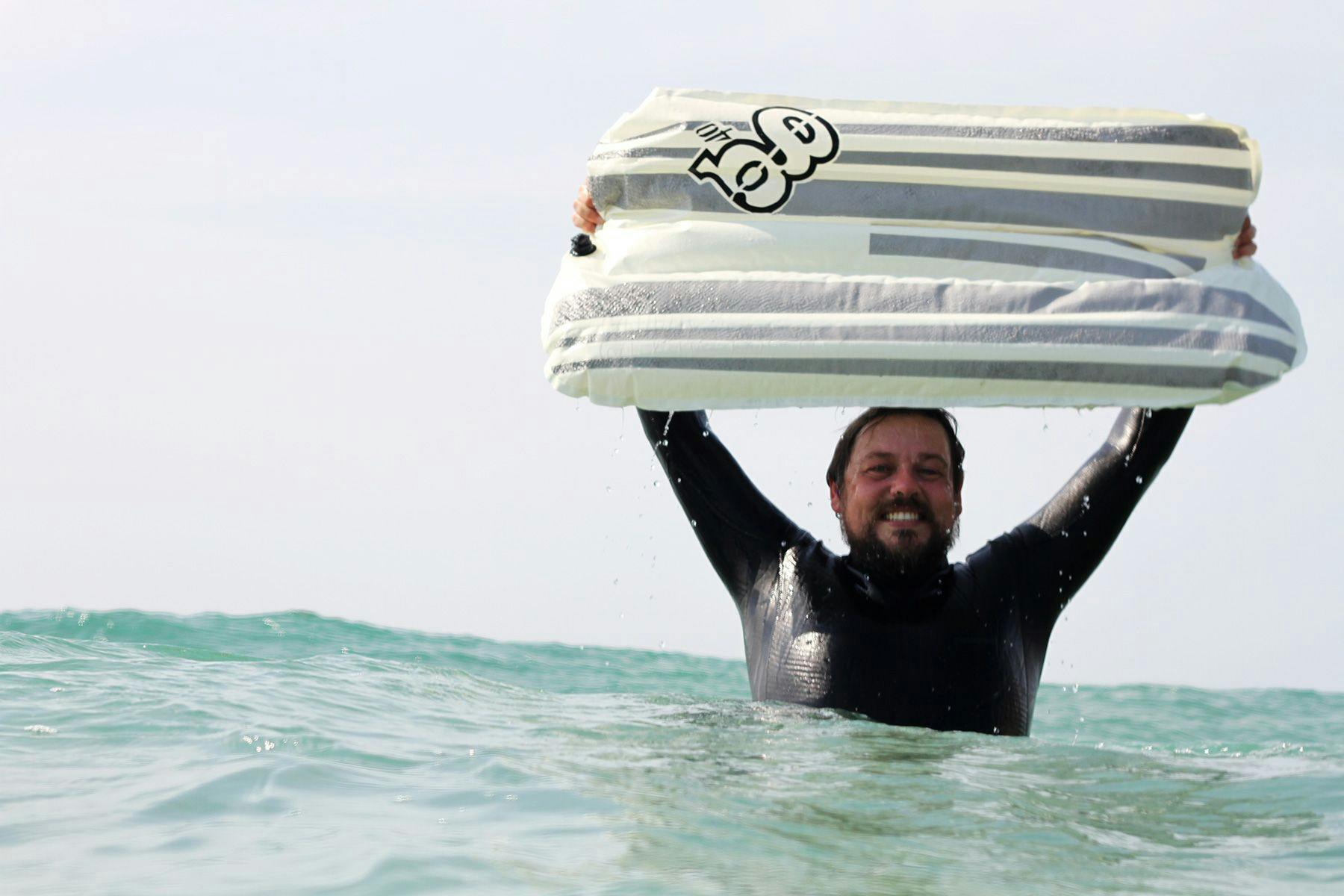
With surf mat riding being such an underground thing, how did you get into it and how are newcomers getting on (or more likely, off) board?
My journey on to surfmats was down to a change of wheels. I was a kneelo and always used to carry a bodyboard and bellyboard in my van for fin-removing waves or tiny days. When I had to briefly downsize to a car, I wanted to carry a prone craft that took up less space. Being a kneelo, and growing up on Crystal Voyager and Fantasea, I had seen mat surfing and, like many people do, thought it was an inflatable alternative to a bodyboard. I quickly discovered that mats certainly aren’t boards of any kind! At the time I didn’t know any other mat surfers so started a forum calls UK Mat Surfers to try to attract some. Finding that small core of dedicated matters and getting together at meets made all the difference. They were great days.
‘Offboard’… That is exactly right! I’ve seen things change over the last decade regarding people coming over to mats. They are certainly getting more airtime [excuse the pun] than at any time since the days of George’s films, and the general mindset of surfers has changed. The #rideeverything hashtag effect if you like. What that means is that comparatively large numbers of people are getting mats. Most don’t stick with it. They are hard to ride and require you to stop riding other craft for a while, or at least dedicate half of every session to them. There is more unlearning than learning to do for experienced surfers and, to be honest, for many people it is more comforting to blame the mat when it doesn’t work straight off than to accept that maybe they just don’t know how to make it go.
The committed/stubborn and open-minded though… They get addicted.
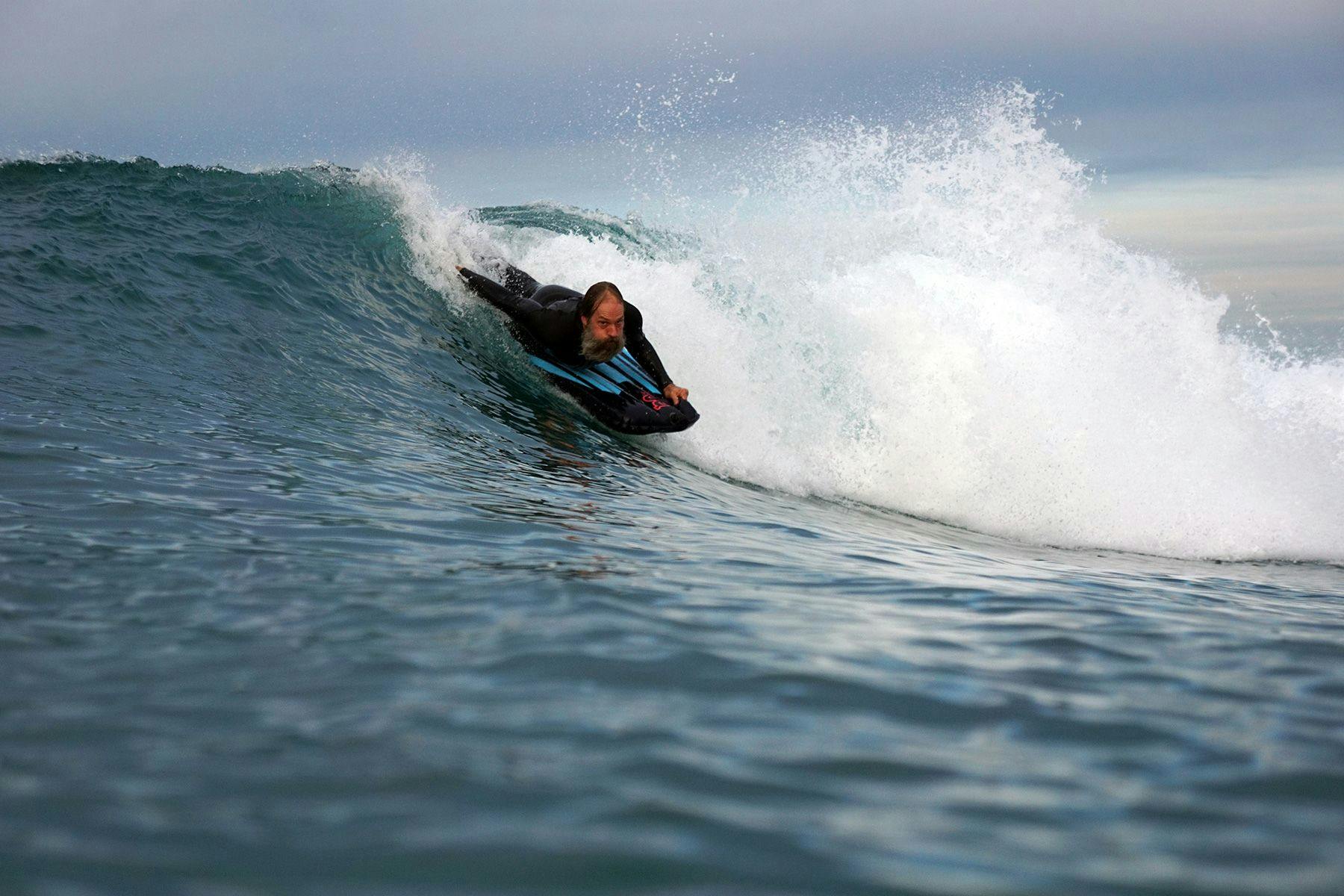
Is mat riding experiencing the sort of surge in interest currently being enjoyed by other wave-riding niches such as bodysurfing and paipos?
When I first started riding mats people would ask “what’s that.” Today, I tend to get “I’ve never seen a mat in the flesh.” The second coming of Greenough, Rasta in Sprout, Warren Pfeiffer in Musica Surfica, Daniel Thomson’s dad, Mark, etc. have all played a part in bringing mats in to the public consciousness. Add to that a few shots of pro stand-up surfers wrestling with rock hard mats and surfmats have gone through the stages of:
LAUGHING STOCK > NOVELTY > SERIOUS SURFCRAFT
Certainly, that is in line with the bump in popularity of bodysurfing, paipo riding and other finless surfing.

What makes mats so special?
Proper mats? The feedback from your environment is like nothing else. Bodysurfers are directly connected to the wave of course but are more in the water. Riding a mat, you are actually riding a morphing bubble of air that transmits every ripple of the wave through to the rider whilst miraculously smoothing them out. Ridden well, a mat can be virtually flat, a completely pliable surface one moment and a contoured craft that offers hold in critical situations and turns like a hard railed board the next.
At full pelt, on a solid, glassy, lined up wave you can reach phenomenal speeds, feeling like you are levitating taking a high line with the tail slightly dropped. Nothing feels like that. As close to a Pelican as you can get. After riding mats for some time and growing accustomed to the feedback, boards just feel dead.
Surfmats are also hugely versatile: Knee-high dribblers with virtually no air; Cranking Newport Wedge matboarding, and everything in between. If it works for you in the conditions you’re riding then you’re doing it right!
So they’re not some sort of super-squishy bodyboard?
No. There are inflatable bodyboards but they are different to surfmats as I see them because they are designed with full inflation in mind to replicate hard boards.

What are modern mats made from, and what are their design features?
Modern surfmats are a completely different proposition to the likes of Converse, Hodgman and Merrin mats that people will have seen Greenough riding. As for Surfo’s… Historically interesting but basically hot water bottles and shouldn’t even be thought of as being the same thing as a modern mat.
Today, top spec mats are made from lightweight nylon coated with TPU (thermoplastic polyurethane). There are only a handful of us in the world producing mats currently. Although there are some very big differences in what we all do, the common factor is that we all use various incarnations of these materials and we use welding methods rather than glue to build mats. Dale Solomonson was the man who pioneered the use of these materials. He completely revolutionised mat building and, as a result, mat surfing and every mat builder and rider owes him a great debt.
Lightweight fabrics mean that mats can be built in a way which means that they are extremely responsive and very fast. The lighter the material used, the faster the mat (if you are comparing two mats with identical dimensions and inflation levels) but the harder it is to control.
Dimensions then play a huge part. Compared to hard boards, the concaves, hooks and channels of mats are exaggerated rail to rail but rockers are much more subtle nose to tail for similar effects. You might think that many mat surfers’ obsession with low inflation renders concaves, rockers and other design features redundant, but one of the many amazing things about mats is that they ‘remember’ their dimensions. A concave will continue to offer lift. A hooked rail will continue to offer hold. To far less a degree of course, but you notice it for sure.
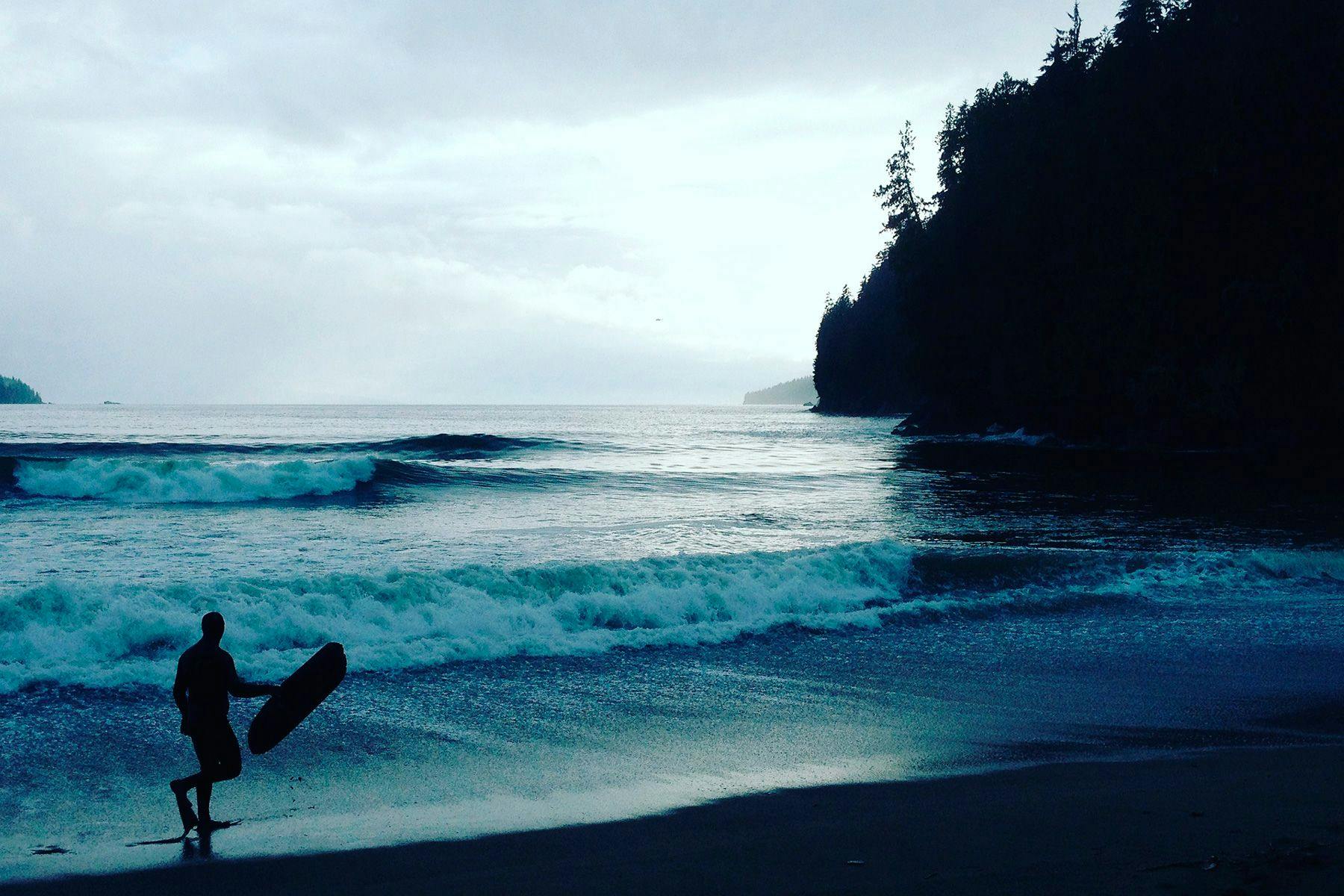
If you could give one piece of advice to a surfer about to paddle out and give an air mat a go…
I can’t give just one. My advice is as follows:
- Pump the mat to between 45 and 90 degrees (ie. so it will fold that far when you try to fold it in half).
- Paddle out and catch waves. Let a little air out each wave until you slip and then put a puff back in.
- Keep your chest down and your elbows in.
- Gently lift and lower the outside rail to manage trim and squeeze to manage inflation. Harder = more hold. Softer = more speed. Never wrangle your mat. That is a fight that you will always lose.
- The wave is in charge. Your job is to work with it completely. Less spray = more smiles.
- Don’t take yourself too seriously…
- But take yourself seriously.
- Counter to the rest of surf culture, the assumption is always that party waves with other matters are welcome unless the person with priority shouts “NO”. (But you do this understanding that you must not mess up other people’s lines).
- Give learning the time it needs and embrace being a kook again. At least 10 sessions where you ride nothing else, whatever the conditions.
- When it clicks, your surfing life will never be the same again and even if you do ride other craft you will find that you have found lines that you were previously unaware of.
- Oh… Go and look at http://ukmatsurfers.com for info and, if you’re from the UK, to link up with other mat surfers on the sessions page. And buy a G-Mat… Obviously!